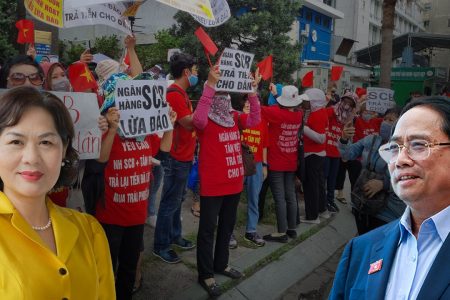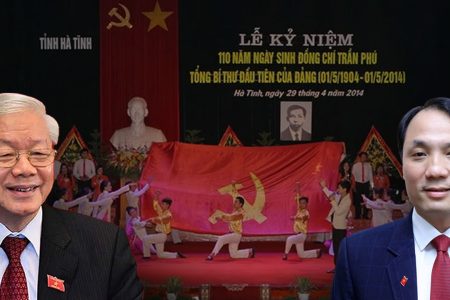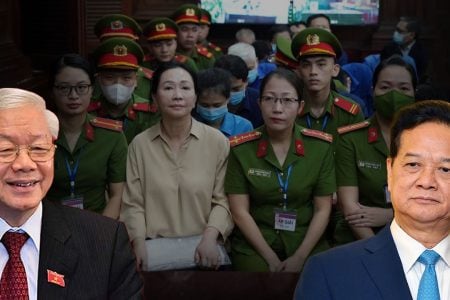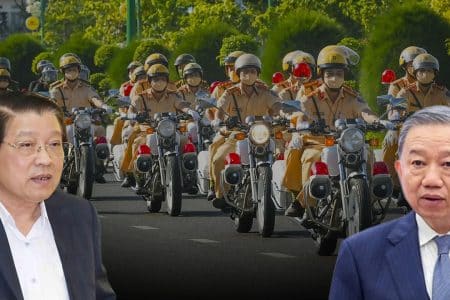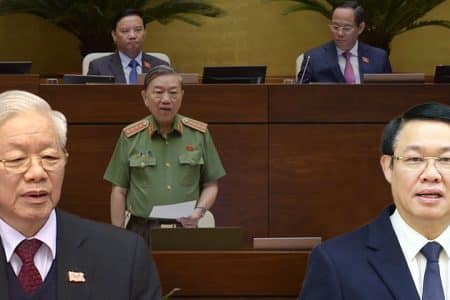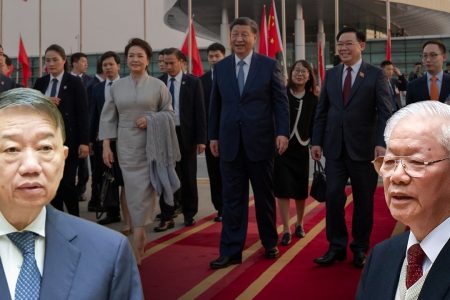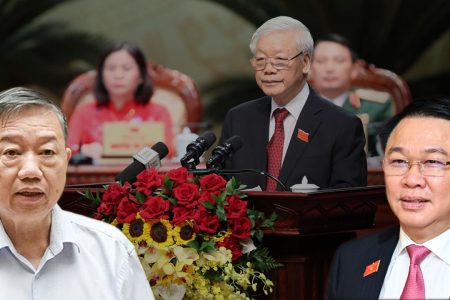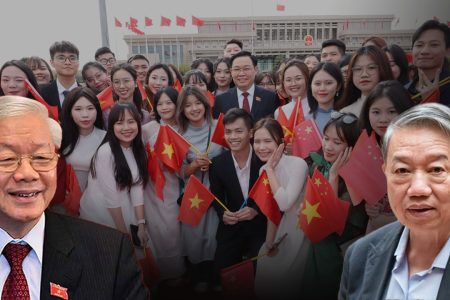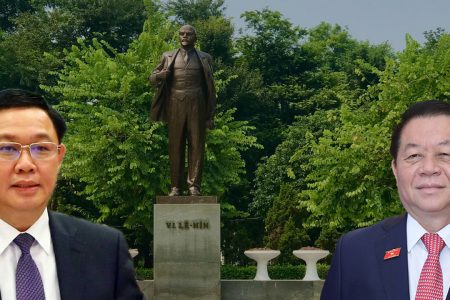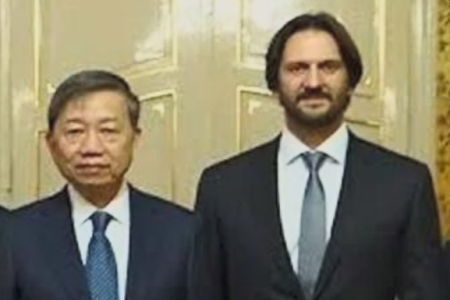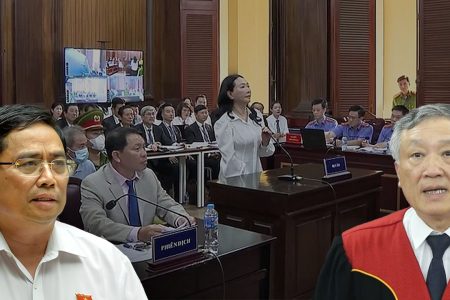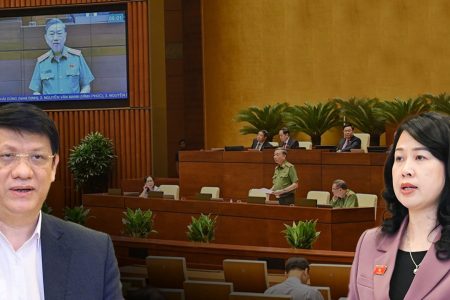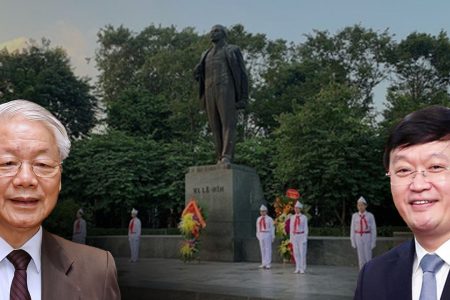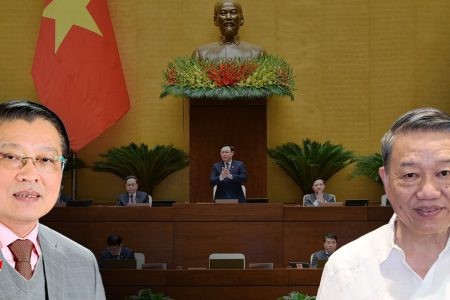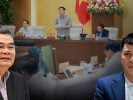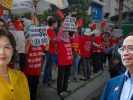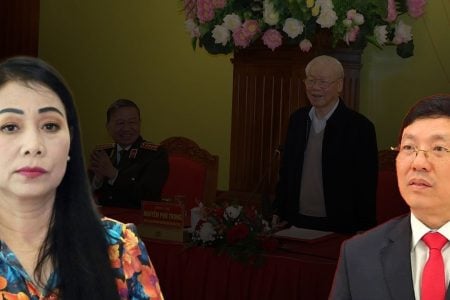
Ensuring economic growth to maintain the legitimacy of the communist party and the authoritarian regime is a key feature of the Chinese model. It is masked by socialist ideology, is pragmatic and transparent in policies, so it helps to increase GDP in the long run, but does not change the authoritarian nature of the regime. Similarities in political regimes make it impossible for Vietnam not to follow the China model, even if the two countries have conflicts over territorial waters. However, the slowdown in economic growth is warned that makes one wonder what will happen.
Practicality
The pragmatism is evident in the Reform and Open Door policy when the Chinese Communist Party “set aside” the core issue of the regime’s ideological foundation which is the class struggle to take advantage of the capitalist economy, “rolling out the red carpet” for foreign investors, considering it a strategy of “transition to socialism.”
This policy saved the totalitarian regime from collapse after Mao Zedong ruled for nearly 30 years (1949-1976). He conducted many socialist experiments with the will, at the expense of tens of millions of human lives, such as the Great Leap Forward or the Cultural Revolution that exhausted the country and starved the population.
The policy initiated by the late General Secretary Deng Xiaoping (1904-1997) from the late 70s of the last century marked a turning point in the country of more than one billion people. There are many records of his legacy that show the pragmatic nature of the policy. Phrases like “black cat and white cat,” “hide and wait for your time,” “let some people get rich first”… are often mentioned, but he said: “I have been observing the world for many years and draw a conclusion: Countries that have good relations with the US all become rich” still makes a strong impression.
The pragmatism has permeated the policy through generations of party leaders following Deng Xiaoping’s ideas such as the theory of “Three Represents” under President Jiang Zemin, clarifying the new political “representative” function of the Communist Party of China, the doctrine of “Scientific Vision of Development” by President Hu Jintao and, more recently, the doctrine of “Xi Jinping Thought on Socialism with Chinese Characteristics in the New Era.” Despite different names, the above policies are justified by the new version of “national sovereignty“, whose author is said to be “court theorist” Vuong Ho Ninh, one of the seven Standing members of the Communist Party of China’s Politburo.
The Reform and Opening Policy that has adapted to the globalized, market-driven neoliberalism that has dominated the world is the main reason for China’s economic success with has grown in double digits for more than a third of a century since the late 1970s and has become the world’s second-largest economic power, surpassing Japan since 2011 and behind just the US.
A pragmatic policy based on the doctrine of national power creates economic success while at the same time justifying the maintenance of Communist Party power, favors violent power, requires absolute obedience, and the order concealed by Marxist-Leninist socialist ideology has not been tested and has failed in testing. Economic growth in China under the leadership of the Communist Party does not lead to democratic transition by itself – that is the myth that the US and Western democracies are changing in response to a rising China. rampage up under the leadership of Xi Jinping.
Can’t let go
The political regime in Vietnam is similar, applying the Chinese model is obvious, but there are differences in policy operation in the specific historical development context. As an economically small country with a low middle-income scale, rising from a backward agricultural starting point in the context of war and peace intertwined, Vietnam has achieved an average annual GDP growth rate of nearly 7% in the past five years. nearly 30 years since Doi Moi is worthy of recognition.

However, the lack of development theory, and being held back by a dogmatic socialist ideology are the main reasons for missing the opportunity for broader institutional reform to develop. The hasty growth policy based on state economic groups is a typical example. In addition, the method of “searching rocks across the river” has ruled out breakthrough policies such as the Special Administrative and Economic Zone, which China has successfully applied, but has not been supported in Vietnam because of the timing and argument of some contents of the Project.
The economic and institutional crisis caused severe consequences, the cause of the wrong policy, and the weakness in management or implementation. The instability smoldered and broke out into a crisis during the 11th Communist Party Congress (2011-2016), whose severity was so serious that it “threatened the regime’s survival,” evidently expressed by the official machine is in recession and the great projects are unfinished and “covered” are struggling to troubleshoot.
The way to deal with the crisis shows that Vietnam cannot let go of the Chinese model when it comes to power concentration, anti-corruption, and internal consolidation instead of breakthrough reforms. The institutional situation is observed as “above hot, below cold“, administrative measures, the inheritance of “constructive government” or a different policy during the 13th National Congress are still being worked on following.
Unchanged essence
China and Vietnam both propagate about socialism as the future, but how to get there, there is a difference in conception. Xi Jinping, the supreme power in China, put forward the doctrine of “socialism with Chinese characteristics in the new era.” Accordingly, the steadfastness of national revival includes core principles, which affirm “Party first, Army second.” This principle is the basis of policies that use military power and diplomacy to “unify territory,” threaten small countries, encroach on the South China Sea and confront democratic values and universal human rights. Analysts say that once growth slows, nationalism is a ready substitute for economic performance to protect the legitimacy of the regime.
In Vietnam, General Secretary Nguyen Phu Trong was at the peak of his power in the third term (2021-2026), in an article dated May 16, 2021, reaffirming the model of a “socialism-oriented market economy “.He was determined to pursue the policy of taking advantage of the capitalist economy, using the advantages of the market, and believed that the socialist regime could overcome its disadvantages…
China and Vietnam share the same “way” when the socialist system of Eastern Europe collapses, despite disagreements over territory, the South China Sea, historical beliefs about each other, their form of relations, and… poor economic projects. effective, but have in common the maintenance of communist party leadership and an authoritarian function.
On July 1, this year the Communist Party of China celebrates its 100th anniversary. This is one of a series of events planned to project strength to realize the Chinese Dream since Xi Jinping became party leader in 2012. There will be no military parade normally held to celebrate the “big” ceremony raises suspicions about internal problems. Either way, waiting for change is futile in nature. In Vietnam, too, it is impossible to let go of the Chinese model. However, the warning of a slowdown in economic growth makes people concerned about what could be bad.
Thoibao.de (Translated)




